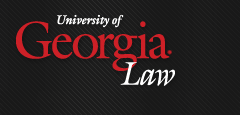Title
Thin But Not Anorexic: Copyright Protection for Compilations and Other Fact Works
Abstract
Questions about the copyrightability of compilations and other low authorship fact works, and about the scope of protection, have continued to trouble courts long after the Supreme Court's landmark decision in Feist Publications, Inc. v. Rural Telephone Services Co. in 1991. Justice O'Connor's opinion, explaining why a standard white pages telephone directory did not meet the constitutional and statutory requirements for copyright protection, defined an original work of authorship as one that is independently created by its author and that evidences at least a minimal level of creativity. The latter requirement has been elusive, in part because Justice O'Connor defined creativity by negative example, describing how an author's efforts in preparing a compilation might not satisfy the requirement. This Article, with the help of many post-Feist opinions, elaborates on Justice O'Connor's guidance for determining whether a compilation or other low authorship work is entitled to copyright protection and, if so, whether the work has been infringed. It was observed forty years ago to make the copyright turnstile revolve, the author should have to deposit more than a penny in the box, and some like measure ought to apply to infringement. This Article explains how much more than a penny is needed to get through the turnstile and that courts have been relatively consistent in applying Feist in a variety of contexts, thereby ensuring that copyright does not improperly extend to facts, ideas, systems and concepts. Traditional case-by-case application of the fundamental principles of Feist is working well and the sweat of the brow rationale for protection has not been resurrected.
Repository Citation
Shipley, David E., "Thin But Not Anorexic: Copyright Protection for Compilations and Other Fact Works" (2008). Working Papers. Paper 57.
http://digitalcommons.law.uga.edu/fac_wp/57

This Faculty Working Paper has been updated and posted within the Faculty Scholarly Works Series. It is currently available here.